Historical habitat use by Coregonus artedi in the upper Great Lakes and critical embayments
Contributing Authors
Yu-Chun Kao (USFWS, yuchun_kao@fws.gov), David Bunnell (USGS), Owen Gorman (USGS), Renee Renauer-Bova (USGS)
Executive Summary
The restoration of the once abundant cisco (Coregonus artedi) is a management interest across the Laurentian Great Lakes. To inform restoration, we describe historical distributions of cisco in the upper Great Lakes (i.e., Lakes Superior, Michigan, and Huron) by analyzing fishery-independent data collected by the U.S. Fish and Wildlife Service's research vessel R/V Cisco in 1952-1962. Primary results, based on data collected by gill nets set on the bottom or obliquely from the surface to the bottom, confirm the importance of embayment and shallow-water habitats to cisco. We found that cisco was abundant in Keweenaw Bay, Lake Superior, and in Green Bay, Lake Michigan, but we also found evidence of cisco extirpation in Saginaw Bay, Lake Huron. Our results also showed that cisco generally stayed in waters 150 m in bottom depth) in summer and fall in Lake Michigan, although we cannot exclude the possibility that this group of fish had hybridized with deepwater ciscoes (Coregonus spp.). Complementary data from bottom-trawl surveys, which were conducted during daylight, showed that rainbow smelt (Osmerus mordax), a non-indigenous species, was widely distributed across the upper Great Lakes during our study period, implying that predation on cisco larvae by rainbow smelt, an interaction reported in Lake Superior, could have contributed to the declines in cisco populations. Conversely, alewife (Alosa pseudoharengus), a non-indigenous planktivore that can potentially compete with cisco for food, was not abundant in Lake Michigan before the declines in cisco populations.
